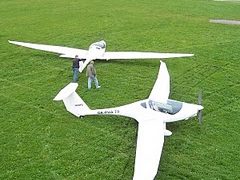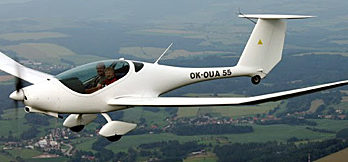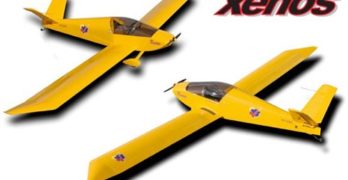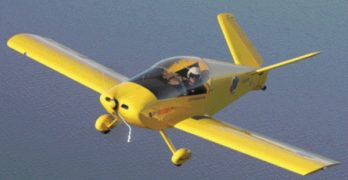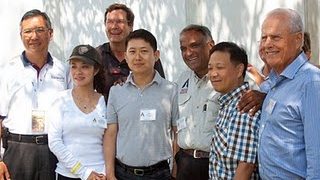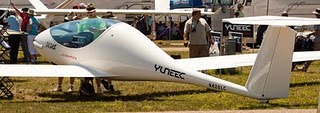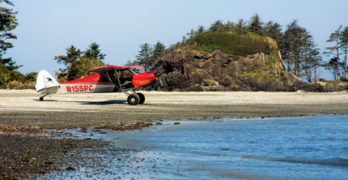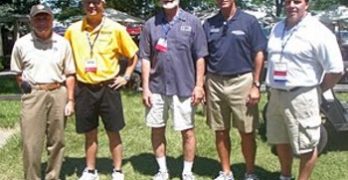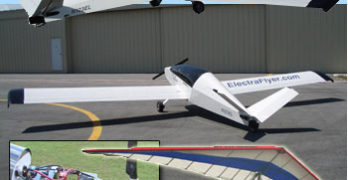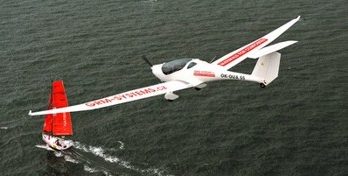Looking out the window at falling snow (and it’s only November 8th… Bah!), back from a two week vacation to Europe and Turkey, and mired in writing a big LSA buyer’s guide for Plane & Pilot mag, I’ve only got a few minutes to splash up some photos of what to me is a big event: the ASTM certification as an SLSA of the Phoenix motorglider! *** See Dan Johnson’s post below where you can follow his links to Jim Lee’s sites for more info on the exciting news we’ve been waiting for some time to hear. *** The Phoenix is the more-than-worthy “sequel” [by another, unrelated company] to the Lambada SLSA motorglider that turned a lot of pilots on (including me and Dan). When two breakups last year clouded its future, a lot of us were glad to hear from Jim that the Phoenix was waiting in the wings to take its place.
Search Results for : motorglider
Not finding exactly what you expected? Try our advanced search option.
Select a manufacturer to go straight to all our content about that manufacturer.
Select an aircraft model to go straight to all our content about that model.
Stirring My Soul — Phoenix Rising
I’ve had the pleasure to fly more than 350 light airplanes of every conceivable description. Most of those experiences brought a smile to my face. A few genuinely stirred my soul. Though I started in powered aircraft I found my way to gliders and to soaring, which I freely admit is my favorite aviation challenge. To rise high above the Earth using only swirling currents of air is magical. *** An extra benefit was acquiring confidence about landing without an engine. To many power pilots, an engine-out landing is scary. But every landing in a glider involves but one approach. You know what? You get comfortable with it and now when I fly a power plane, I don’t worry as much about a loss of power. My power plane will just become a glider and I know how to handle that. *** So with great anticipation over an eventual test flight, I am delighted to announce the Phoenix was certified as SLSA #111 in August 2010.
Flying the Xenos
Author Murry Rozansky did a fine job of evaluating the Xenos but since I had the chance to go for a late-in-the-day flight with Jeremy Monnett, I wanted to add just a few words on the company’s motorglider. The soaring pilot in me just had to see how the long-winged version of the Sonex felt aloft.
After landing with John, I flew with son, and Sonex general manager, Jeremy, in the company’s Oshkosh-based Xenos. The one Rozansky flew is based in Tehachapi, California with Sonex engineer, Pete Buck. The Wisconsin Xenos used the same AeroVee engine as the Waiex whereas the Xenos out west is powered with a Jabiru 3300.
One notable difference is the ailerons, which have much more span and much less chord than the Waiex. And naturally, a long gliding machine like this adds spoilers to the control mix.
As we taxied out, Jeremy tended not to use the brake; he just retarded the throttle, which seemed to slow down taxi speeds quickly.
Sonex Aircraft’s Y-tailed Waiex
Pedal to the Metal
The Y-Tail Waiex combines unusual style with refreshing speed.
The airlines may be suffering and
Light-Sport Aircraft (LSA) has yet to
coalesce into a coherent industry
segment, but Sonex Ltd. is having a fine run
of business. During my visit on a beautiful
fall day in Oshkosh, Sonex said it was ready
to break ground on a new hangar, the third
building of what has become the Sonex
campus on Wittman Field. At press time, it
was nearly complete.
Sonex is clearly ready for LSA, but
the company has built its enterprise on
delivering kits to the Experimental/ Amateur-
Built community. Steadily selling kits
keeps Sonex in good business shape while
LSA comes into focus. This company is well
positioned for whatever future recreational
flying holds.
$22,260. That calculates to an amazing $148
per mph.
Most of us don’t think in terms of
dollars per mph-and the comparison
with the RV-9 ignores the fact that
the RV is larger, heavier and, as a result,
more cross-country capable-but it
certainly proves that the Monnett machine
won’t take too much of your money for the
speed it can deliver.
Oshkosh Day 5
The Sleeping Giant Wakes… Big news from China: IndUS Aviation threw a big lunch bash today at Oshkosh to break word of its exciting new program to shift production of all its Thorpedo LSA to China, as part of a unique collaboration with the country’s government and private industry to begin to grow Chinese General Aviation. *** The program will launch this fall at the new LuYangHU General Aviation Development Zone in Weinan, China. There is currently no GA permitted in the country. This will be the first — carefully studied and controlled, to be sure — attempt to bring private aviation to Chinese citizens: a fascinating period in history, and one that, with this partnership, aims to open the country wide to sales of light sport aircraft from all over the world. *** Indus will build LSA for its domestic market as well as worldwide — including Chinese citizens.
Oshkosh Day 2
Recovering from the mud soup floods that crippled arrivals a few days ago (so many airplanes typically park on the grass), things began to dry out enough yesterday to bring robust opening day attendance, helped in large part by the beautiful weather. Humidity was manageable, temps were in the mid-80s. *** A great start for EAA (which reportedly draws 45% of its yearly revenue from Airventure), with lots to see and talk about. *** Highlights: *** Yuneec, (which seriously needs to update its website), is the Chinese electric aircraft company that blew open the hangar doors of everybody’s electric flight dreams last year with the debut of the beautiful E-430 all-electric S-LSA. They’ve guarded some tasty secrets since, which came to light yesterday. *** I spent a half hour with Managing Director Clive Coote to get updated, here are some highlights (more details down the road, and in my electric flight article which will run in a P&P issue this fall).
Best LSA Picks of 2010
More than 20 Top LSA You Can Buy
The light-sport aircraft industry hangs in there, although sales numbers, as with general aviation, still struggle to gain safe altitude in the stormy economic skies. Encouraging item: LSA sales in 2009 represented nearly 25% of all GA piston purchases. Another surprise: Most of the 107 models available for sale here and abroad are still in production with more new models in the pipeline! Nobody’s getting rich (this is aviation, remember?), but most makers believe the turnaround will come. That’s the spirit!
And with the Euro taking heat against the dollar lately as Europe goes through its own econoclysm, U.S. prices for foreign-produced LSA could drop. Many airframe makers lowered prices, but the industry still faces challenges: ongoing dyspepsia imbued by the sluggish recovery; market recognition… many people still aren’t aware of what an LSA is, maybe that’s why 20% of all U.S. sales in the U.S.
New EAA Electric Flight Prize
In the wake of its week long focus on electric-powered flight at the just-concluded Oshkosh AirVenture 2010, EAA just announced a $60,000 prize to “speed development of electric flight technology.” *** As I posted earlier here, during the World Symposium on Electric Aircraft, Erik Lindbergh awarded his LEAP prize to three companies for their contributions to the burgeoning technology: Yuneec International’s E430, Alex Lange’s in-production Antares 20E motorglider, and John Monett’s E-flight Initiative. *** Prize money will go to the individual or corporation that demonstrates the most promising level of achievement in electric-powered flight at AirVenture 2011. “Most promising” will be more fully detailed once EAA completes its “assessment of the status of electric flight”, according to the official release. *** EAA President Tom Poberezny praised the four companies that will make equal contributions to the $60,000 prize money: AeroLEDs, Aircraft Spruce & Specialty, Dynon Avionics, and Wicks Aircraft Supply.
Electric Power — Getting Closer to LSA Usage?
Randall Fishman’s ElectraFlyer Trike pumped me up. As a trike enthusiast, my real interest is soaring. A lightweight trike with an electric motor offers real advantages (see my earlier SPLOG).
I want to climb high enough to find lift, shut off the power, and hop from thermal to thermal. To me, that’s pure flying! An electric motor starts up readily if you lose the lift. It doesn’t vibrate. It doesn’t have smelly fuel or oil. It’s quiet, other than a bit of prop noise. But was it powerful enough?
With his second project, Randall has again motivated me. The Moni he renamed ElectraFlyer C is a motor glider at heart. Again, an electric powerplant sounds perfect.
“You can fly for an hour and a half on less than $1.00 of power”…and that assumes you keep the power on. Randall and I will look each other up in Florida this winter and I’ll investigate for a further report.
Phoenix Rising: The Next Big Thing?
Caught up with Jim Lee recently to find out what’s up with the Phoenix motorglider I wrote about here a few weeks back. *** The good news is his full time devotion to making Phoenix the Next Big Thing in LSA motorized soaring flight. He’s renamed his Urban Air company Phoenix Air USA. *** Believe me, if you haven’t tried a motorglider, you’re missing one of aviation’s greatest experiences. *** Imagine cruising along as fast as 115 knots on a thermally active afternoon. Up ahead, a big, white cumie cloud with a flat, gray bottom presents an irrestible invitation. *** Here’s where the fun starts: as you get closer, you turn off the engine, feather the prop, trim up for minimum sink, and start looking for the lift under the cloud. In a minute or two your search is rewarded with a good, strong push under the left wing – That’s lift calling your name!
- « Previous Page
- 1
- …
- 16
- 17
- 18
- 19
- 20
- …
- 23
- Next Page »


